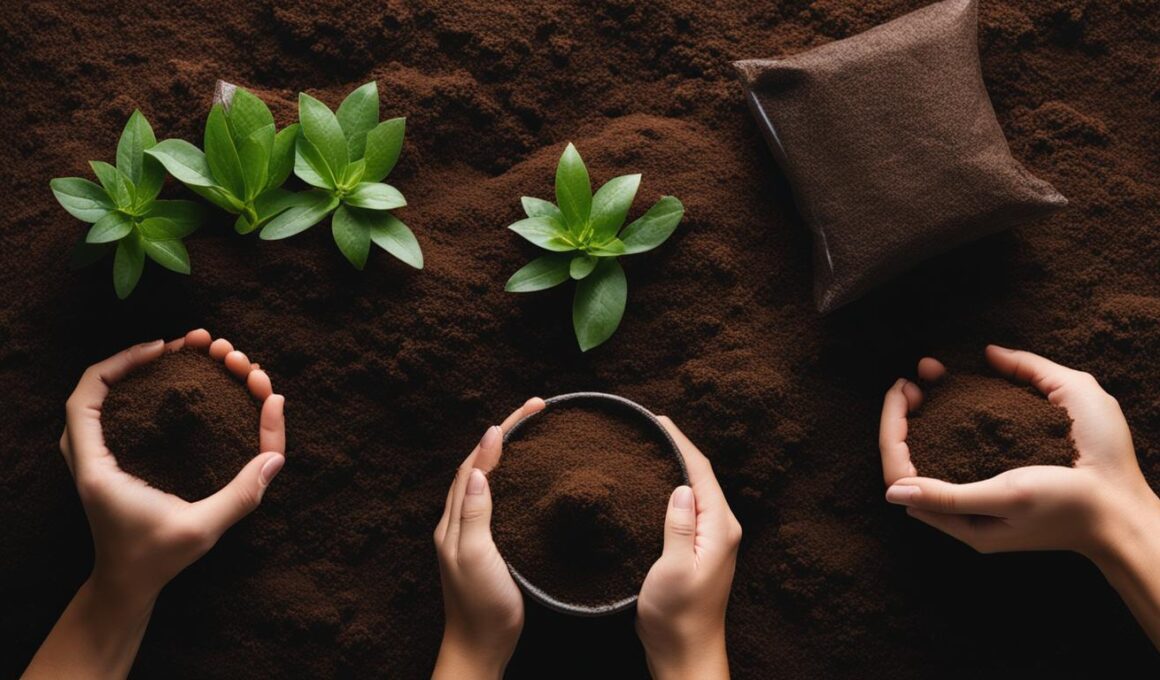When it comes to gardening, selecting the right growing medium is essential for the health and success of your plants. Two popular options that gardeners often consider are peat moss and coco coir. These natural materials offer unique benefits and properties that can improve the growth and vitality of your garden. In this article, we will explore the differences between peat moss and coco coir, helping you make an informed decision for your gardening needs.
The Pros of Peat Moss
Peat moss boasts several benefits that make it an excellent choice for gardeners. Its unique properties contribute to improved water retention and soil texture, making it a versatile and cost-effective option for various gardening applications.
1. Excellent Water Retention
Peat moss is renowned for its exceptional water-holding capacity. It can absorb and retain up to 20 times its weight in water, ensuring that plants have a steady supply of moisture. This makes it particularly beneficial for plants that thrive in moist environments. By slowly releasing water over time, peat moss helps prevent overwatering and water wastage.
2. Enhances Soil Texture
Another advantage of peat moss is its ability to improve soil texture. When incorporated into the soil, it lightens and aerates it, creating a looser and well-drained medium. This allows plant roots to penetrate easily, facilitates nutrient absorption, and promotes overall plant health. Peat moss’s texture-enhancing properties make it an ideal component in seed starting mixes, potting mixes, and outdoor planting beds.
3. Accessibility and Cost-Effectiveness
One of the advantages of using peat moss is its widespread availability and affordability. It can be easily found in garden centers, nurseries, or even online. Compared to other soil amendments, peat moss is relatively inexpensive, making it a budget-friendly choice for gardeners of all levels of experience.
4. Versatility in Gardening Applications
Peat moss can be used in a variety of gardening applications, extending its benefits to various aspects of plant growth. Whether you are starting seeds indoors, potting plants, or establishing new beds in your garden, peat moss can provide the right conditions for healthy plant development. Its versatility and adaptability make it a reliable and widely adopted choice among gardeners.
By harnessing the exceptional water retention and soil texture-enhancing properties of peat moss, gardeners can create an optimal environment for their plants to thrive and flourish.
The Pros of Coco Coir
When it comes to gardening, coco coir is a fantastic alternative to peat moss that offers numerous benefits, making it a popular choice among gardeners. Not only does it provide excellent water retention capabilities, but it also boasts a more neutral pH level, making it suitable for a wider range of plant species. Let’s explore the advantages of using coco coir in your garden:
1. Superior Water Retention
Coco coir has exceptional water retention capabilities, allowing it to hold moisture for extended periods. This is especially beneficial for plants that thrive in consistently moist soil conditions. As a result, coco coir reduces the need for frequent watering, helping you conserve water and save time.
2. pH Level Ideal for Plant Growth
The pH level of coco coir is closer to the ideal range for most plants. Unlike peat moss, which tends to be more acidic, coco coir provides a neutral pH environment, promoting optimal plant nutrient uptake and overall growth. With coco coir, you can enjoy a wider variety of plant species without worrying about pH level adjustments.
3. Sustainable and Environmentally Friendly
Coco coir is derived from the husks of coconuts, making it a sustainable and eco-friendly choice. Unlike peat moss, which is harvested from delicate peat bogs, coco coir is a byproduct of coconut production, utilizing a waste material. This significantly reduces its environmental impact and contributes to a more sustainable gardening practice.
Furthermore, coco coir decomposes slowly, enhancing soil aeration and promoting better root development. Its high cation exchange capacity allows it to store and release essential nutrients, providing a steady supply to plants over time.
Overall, coco coir not only offers similar benefits to peat moss, such as water retention and improved soil texture, but it also surpasses it in terms of sustainability and pH levels. By choosing coco coir as a growing medium in your garden, you can enjoy a greener approach to gardening while providing optimal conditions for your plants to thrive.
Which Is Better for Planters: Coco Liners or Peat Moss?
When it comes to planters, many gardeners debate whether coco liners for planters or peat moss are better. Coco liners for planters provide excellent water retention and aeration, while peat moss offers good moisture retention and pH balance. Ultimately, the choice depends on the specific needs of the plants being grown.
Conclusion
When deciding between peat moss and coco coir for your gardening needs, there are several important factors to consider. Peat moss is well-known for its excellent water-holding abilities and nutrient content, making it a popular choice among gardeners. However, concerns about sustainability and acidic pH levels associated with peat moss have led many to explore alternatives, such as coco coir.
Coco coir, derived from coconut husks, offers good water retention, aeration, and a more neutral pH level compared to peat moss. It is also considered a more sustainable option, as it is a byproduct of coconut production that would otherwise go to waste. Its environmentally-friendly nature has made it increasingly popular among gardeners.
Ultimately, the choice between peat moss and coco coir will depend on your individual gardening needs and preferences. If you prioritize water retention, nutrient content, and are not concerned about sustainability or pH levels, peat moss may be the right choice for you. On the other hand, if you are looking for a more sustainable option with comparable water retention and aeration properties, as well as a neutral pH level, coco coir is worth considering.
For a balanced approach, it’s also possible to mix peat moss and coco coir together in your gardening projects. This can help you benefit from the water-holding abilities of peat moss while enjoying the sustainable and neutral pH properties of coco coir. Experiment and find the combination that works best for your plants!









